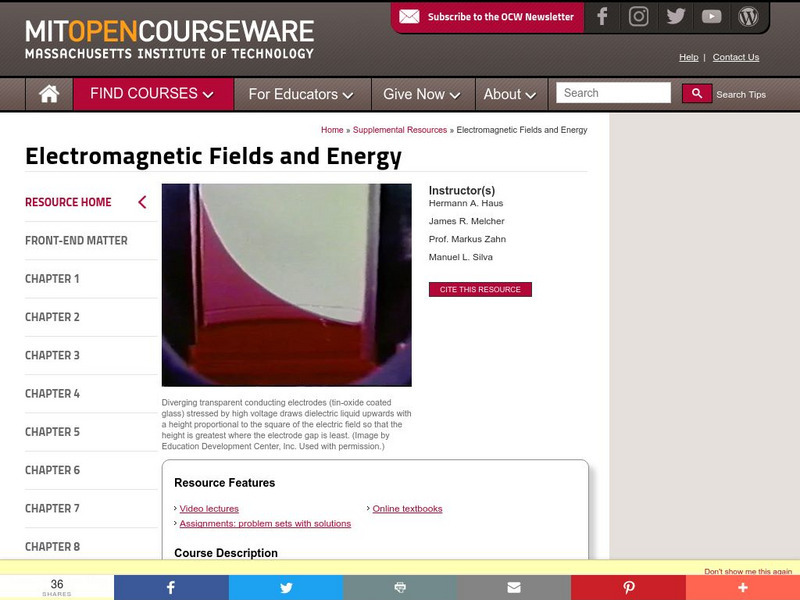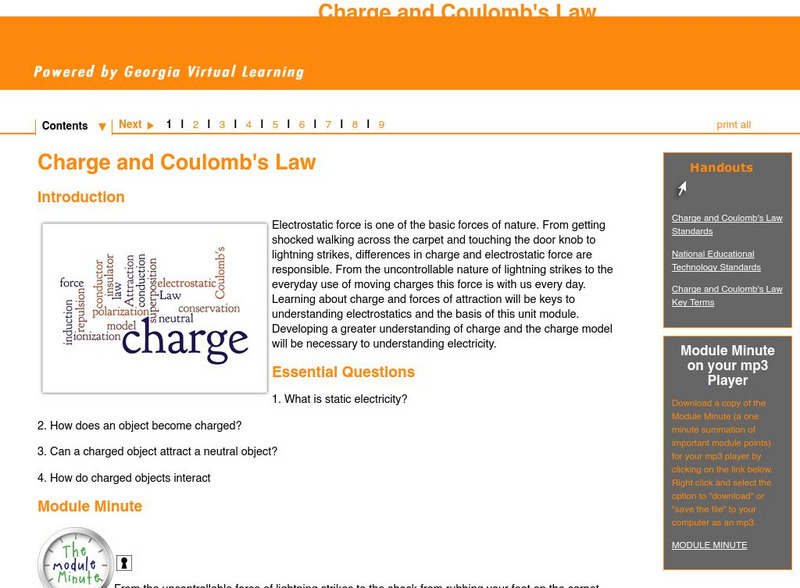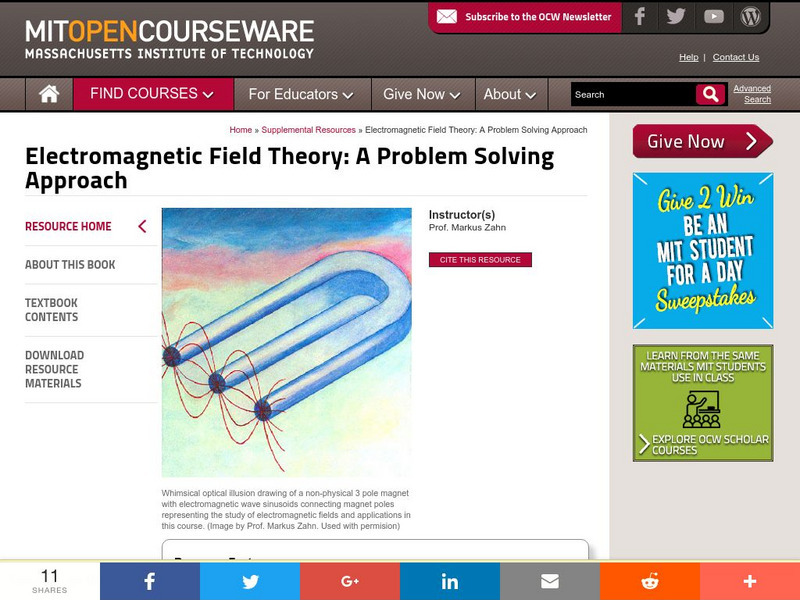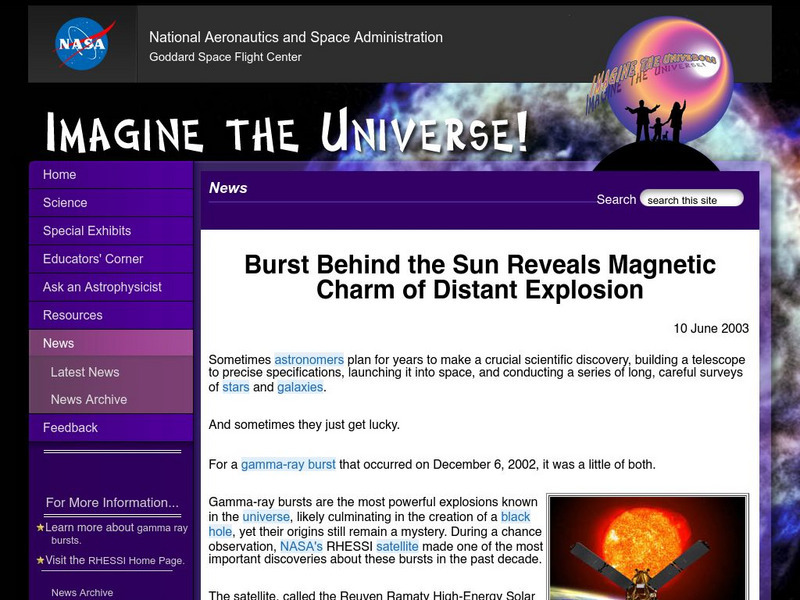Other
Polarization.net: Polarized Light in Nature and Technology
Incredible sight focusing on all varieties and instances of polarization as found in nature and in human-made technologies.
Other
Polarized Light in Nature and Technology
Incredible sight focusing on all varieties and instances of polarization as found in nature and in our surroundings.
Canada Science and Technology Museum
Canada Science and Technology Museum: Background Information for Light
Light! How do we see? What makes light? Find out everything you need to know through the Q&As on this site.
National High Magnetic Field Laboratory
Magnet Academy: Simple Electrical Cell
This is a Java tutorial showing the simple voltaic (or galvanic) electrical cell, which is the most basic type of "wet" cell and demonstrates the fundamental chemistry behind batteries.
TeachEngineering
Teach Engineering: Stations of Light
Student groups rotate through four stations to examine light energy behavior: refraction, magnification, prisms and polarization. They see how a beam of light is refracted (bent) through various transparent mediums. While learning how a...
Concord Consortium
Concord Consortium: Electrostatics
Use a series of interactive models and games to explore electrostatics. Learn about the effects positive and negative charges have on one another, and investigate these effects further through games.
Physics Classroom
The Physics Classroom: Light Waves and Color
The behavior of light waves is introduced and discussed. Also, polarization, color, diffraction, and interference are introduced and discussed thoroughly as supporting evidence of the wave nature of light.
Massachusetts Institute of Technology
Mit: Open Course Ware: Courses: Physics: Electricity and Magnetism
College-level physics course highlighting electromagnetism. This course also includes a wide variety of other physics topics including lightning, electrocardiograms, metal detectors, and atom smashers, to name a few. Course includes a...
Massachusetts Institute of Technology
Mit: Open Course Ware: Supplemental Resources: Electromagnetic Fields and Energy
College-level textbook highlighting electromagnetism concepts. Many of the topics are explained in video demonstrations.
Georgia Department of Education
Ga Virtual Learning: Charge and Coulomb's Law
Learning about charge and forces of attraction will be keys to understanding electrostatics and the basis of this learning unit. Developing a greater understanding of charge and the charge model is necessary to understanding electricity.
Physics Classroom
The Physics Classroom: Polarization
"How Do We Know Light Behaves as a Wave?" An answer is provided in this discussion of the polarization of light and the use of Polaroid filters in sunglasses. The four methods discussed on this page are: polarization by transmission,...
PBS
Pbs Learning Media: Testing for Static Electricity
In this video segment adapted from ZOOM, cast members show you how to make your very own electroscope. You can use it to find out if an object is electrically charged. [4:17]
Concord Consortium
Concord Consortium: Stem Resources: Chemical Bonds
By working through this web-based activity, students differentiate between ionic, non-polar covalent, and polar covalent bonds. Specifically, distinctions are made between bonding types based on orbital shapes and electronegativity...
Massachusetts Institute of Technology
Mit: Open Course Ware: Resources: Electromagnetic Field Theory
College-level electrical engineering textbook starting from the Coulomb-Lorentz force law on a point charge. Sample problems that reinforce the content are found at the end of each chapter. Includes downloadable excerpts of the textbook...
Massachusetts Institute of Technology
Mit: Open Course Ware: Resources: Video Demonstrations in Lasers and Optics
Several demonstrations shown in a video lecture format, illustrate the theory and applications of lasers and optics.
University of Colorado
University of Colorado: Physics 2000: Temperature and Absolute Zero
A thorough, multipage discussion of color and color television sets that explains how an image is formed on the television using red, green, and blue light. Understandable discussion, excellent graphics, and many interactive Java applets.
Science Education Resource Center at Carleton College
Serc: Properties of Electrostatic Charge: Interactive Lecture Demonstration
Students will investigate the properties of charge, charge by contact, the polarization of charge, and charge by induction. Through the use of demonstrations, students should have a thorough understanding of the movements of electrons...
Physics Classroom
The Physics Classroom: Light Waves and Color Table of Contents
Students explore color, vision, and two-point source interference. The tutorial consists of lessons and problems to check for understanding.
Other
National Academy of Sciences: Biography of Rodney Cool [Pdf]
Rodney Lee Cool spent much of life's work on hyperons. This is the classic biography of a real-life scientist, a particle physicist. It's touching and enlightening, complete and full of science and significance. Requires Adobe Reader. [PDF]
Exploratorium
Exploratorium: Science Snacks: Polarized Sunglasses
An experiment that demonstrates how polarized sunglasses work.
Exploratorium
Exploratorium: Science Snacks: Rotating Light
An experiment where polarized light is shone into a solution of sugared water, causing each of the colors in white light to change direction in varying amounts.
Other
Network World: Group Behavior and Security
This article summarizes the role of group dynamics with employees. Discusses how group polarization can be a disadvantage.
NASA
Nasa: Imagine the Universe: "Burst Behind the Sun"
Site provides the article, "Burst Behind the Sun Reveals Magnetic Charm of Distant Explosion," that details on a gamma-ray burst that occurred on December 6, 2002. Provides graphics and links to learn more about gamma-ray bursts.
Sophia Learning
Sophia: Dipole Dipole Forces
A brief tutorial which defines a dipole-dipole force, and explains how to identify which molecules exhibit dipole-dipole forces.
















